March 17th, 2018 — 5:59pm
And Then All Hell Broke Loose: Two Decades in the Middle East by Richard Engel
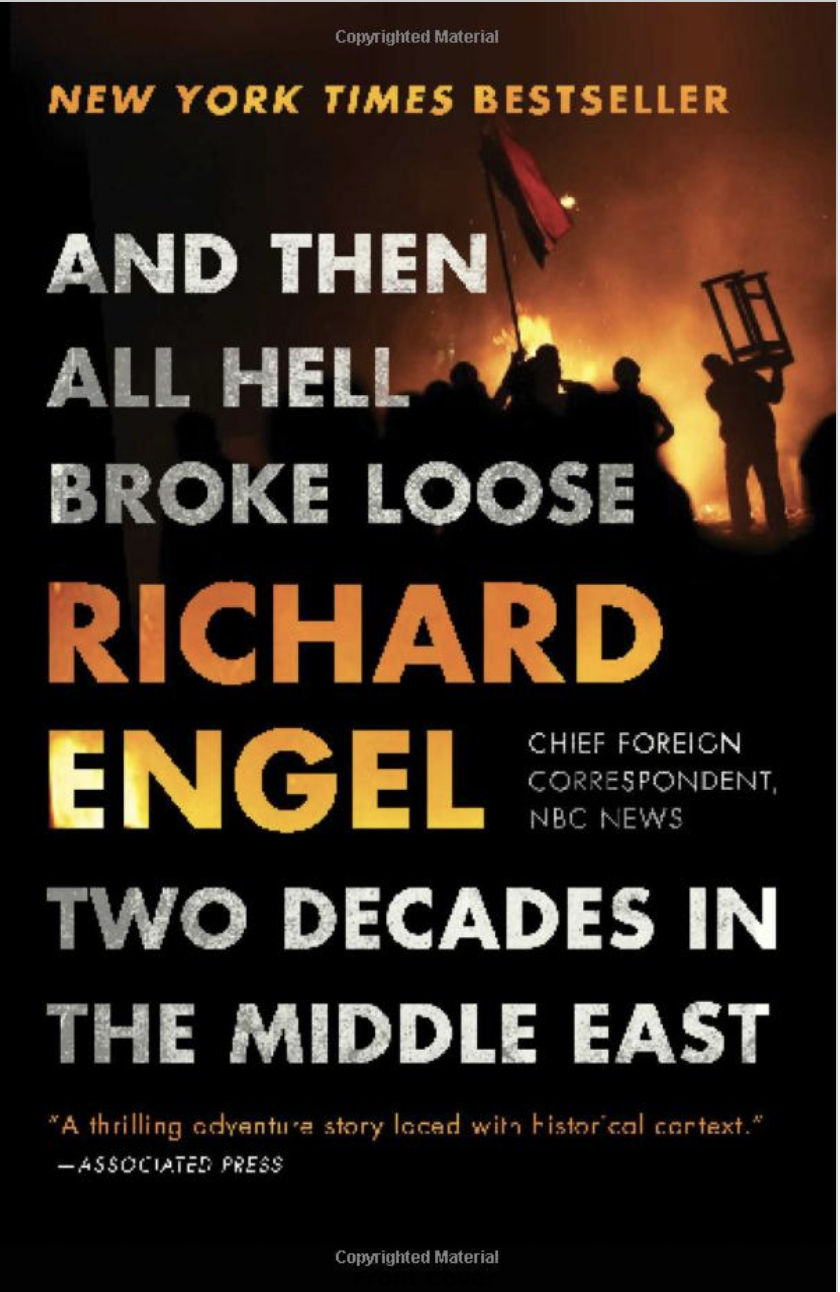 I have always enjoyed Richard Engel’s television reports from the Middle East. He comes across as a brave, dedicated, knowledgeable reporter. More recently, I have seen him on NBC with a helmet and flak jacket reporting riots and in the middle of dangerous situations. Therefore, it was quite interesting to read about his determination as a young man to be a reporter and why he chose to specialize in the Middle East. He certainly was ambitious, but he was willing to put in hard work and to climb a ladder going from a freelancer to NBC’s go-to person in the Mid East. His adventures included a situation where he was captured and held prisoner. The book had the makings of a interesting movie or documentary.
I have always enjoyed Richard Engel’s television reports from the Middle East. He comes across as a brave, dedicated, knowledgeable reporter. More recently, I have seen him on NBC with a helmet and flak jacket reporting riots and in the middle of dangerous situations. Therefore, it was quite interesting to read about his determination as a young man to be a reporter and why he chose to specialize in the Middle East. He certainly was ambitious, but he was willing to put in hard work and to climb a ladder going from a freelancer to NBC’s go-to person in the Mid East. His adventures included a situation where he was captured and held prisoner. The book had the makings of a interesting movie or documentary.
The history of this area of the world has always seemed quite complicated to me. As part of this book, Engel makes an effort to trace the history of this part of the world back to ancient times. He makes a professional attempt to describe the history dating back to Mohammed and even earlier. He explains the differences between various groups and sects, such as Shiites and Sunnis and goes into great detail about the various leaders (mostly not elected) who were strong in the various countries and describes how they have impacted the history of this region. He tells how each one came to power as well as why they were able to stay in power or were toppled by opponents, sometimes with or without the help of the United States or other outside countries. I wish I could say that I am greatly enlightened by these descriptions and that I now have a coherent understanding of the history and the various power of factions in the Mid East but unfortunately, that would not be true. While Engel is clearly a knowledgeable scholar of the history and of the intricacies, they still blend together in my mind although I have not given up on trying to master an understanding of them.
While I am sure Engel would disagree, I did feel that he was somewhat unsympathetic to Israel. He noted at one point when he and his young first wife lived in Jerusalem, most of the Americans that he met there “were deeply involved in their temple groups.” He went on to say that he was “never able to break into their close-knit communities.” Also, in describing the Israeli ministers at all level, he noted, “I never saw such a well-oiled public relations machine.” When describing life under the Oslo Agreement, for the Palestinians living in the West Bank, he emphasized how blatantly unfair it was to the Palestinians, “it was a strange system which Palestinians had different rights depending where they lived.” He made the statement that “Many Israelis then and now, scarcely saw the Palestinians as human.” During the confrontation between Israeli soldiers and Palestinians throwing rocks at them, he noted that the Israelis shot rubber bullets, which he then added, “could cause fatal hematomas” as if the rocks thrown at the soldiers were not dangerous. Furthermore, in his description of the Israeli-Lebanon conflict, I thought he was negative towards Israel. I have never doubted Engel’s attempts at being an objective reporter, but as noted, I did think he was unfairly unsympathetic to Israel.
Despite my feelings about his one-sided view of Israel and my own difficulty in grasping a substantial piece of the history lessons he tried to give, I found this book a very a interesting and worthwhile read from a familiar television reporter for whom I have great admiration.
Please leave any comments below
To purchase a copy of this book on Amazon, please click here
Comment » | AM - Autobiography or Memoir, HI - History, P - Political
March 16th, 2014 — 3:11pm
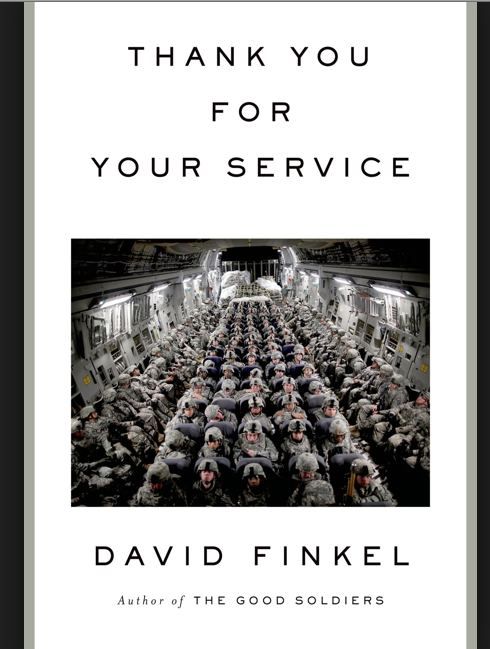 Thank You For Your Service by David Finkel– This is a nonfiction account, which reads more like a novel, of the story what happens to the soldiers who return from Iraq and Afghanistan after being mentally injured in combat. The author David Finkel previously wrote a well-received book, The Good Soldier, about his observations as an embedded war correspondent. Now he closely follows a group of soldiers most of whom know each other as they came home to their families, some with physical injuries but all with post traumatic stress disorder (PTSD). He writes in the third person and there is no trace of the author’s actual presence although it is like he is a fly on the wall, reporting dialogue in their homes, bedrooms, etc. and in the various treatment programs, which attempt to rehabilitate them. The book takes us back to their combat experiences in foreign countries as well as to their battles with their spouses and with their demons. This is a close up view that can get you inside the head of these men and their spouses. It is as if you were the trusted therapist who was being told all. In fact, clinicians in training or those wanting to get experience with this population of people, psychologically impaired by war would certainly benefit by reading this book. There was clear insight into the thinking of all the subjects but there was no simple answer how to treat them or how they can live with the sequelae of this war experience.
Thank You For Your Service by David Finkel– This is a nonfiction account, which reads more like a novel, of the story what happens to the soldiers who return from Iraq and Afghanistan after being mentally injured in combat. The author David Finkel previously wrote a well-received book, The Good Soldier, about his observations as an embedded war correspondent. Now he closely follows a group of soldiers most of whom know each other as they came home to their families, some with physical injuries but all with post traumatic stress disorder (PTSD). He writes in the third person and there is no trace of the author’s actual presence although it is like he is a fly on the wall, reporting dialogue in their homes, bedrooms, etc. and in the various treatment programs, which attempt to rehabilitate them. The book takes us back to their combat experiences in foreign countries as well as to their battles with their spouses and with their demons. This is a close up view that can get you inside the head of these men and their spouses. It is as if you were the trusted therapist who was being told all. In fact, clinicians in training or those wanting to get experience with this population of people, psychologically impaired by war would certainly benefit by reading this book. There was clear insight into the thinking of all the subjects but there was no simple answer how to treat them or how they can live with the sequelae of this war experience.
The known connection between TBI ((Traumatic Brain Injury) and PTSD is repeatedly demonstrated although it is not invariable. The soldiers bring back tremendous guilt for what they have seen and done which is not easily alleviated by a rational analysis. Seeing buddies maimed and violently killed in a split second, no matter how conscientiously they tried to hold their fellow soldier’s body together while waiting for a medic or intellectually knowing they had no realistic way to avoid these events does very little to mitigate their guilt. One soldier was faced with an enemy firing a deadly weapon at him while holding a 3-year-old child in his arms. It was a self-preservation act to fire his own weapon and kill his enemy and the child but nevertheless the guilt continues to haunt him. It should not be surprising that the families of the wounded warriors also experience emotional damage. This pain is not only psychological but also physical in the form of what at times is severe domestic violence. There is also the suggestion that the participants in today’s volunteer army may be more likely to have had some emotional instability prior to enlisting. There are no statistics given to support this nor does this diminish the responsibility that we have to the all the heroes whom we meet in this book.
The undercurrent of this book is the subject of suicide. Such thoughts lurk in a large number of these injured soldiers and there are numerous examples of serious contemplations to end their own life with some cases where they carried out this deed. I well remember following the rising statistics several years ago as the number of suicides among active duty soldiers and veterans gradually increased until they were more than the civilian population and then ultimately exceeded the number of combat deaths. This book illustrates the stories behind these numbers by not only recounting the suicidal thoughts and near acting out of them by some of the subjects of the book but also by describing a special conference call held on a daily basis. This was the meeting run by a high ranking General linked to military bases around the world during which every suicide committed by a soldier was reviewed. At one point this was more than 22/day. The goal was the valiant but obviously unsuccessful effort to extract suicide prevention measures from this deadly experience to significantly eliminate this deadly situation.. Although not mentioned in this book, this was during a time that many people including this writer were advocating that families of soldiers who suicide should receive an official letter of condolence by the US President which is done for every fallen soldier and which was not happening at that time.
I came away away from this book hoping that the emotional toll that warriors of war will pay be factored in along with the loss of life and limb, when anyone on this planet contemplates actions that will lead to armed hostilities.
Comment » | MHP - Mental Health/Psychiatry
August 25th, 2013 — 3:19pm
 The Guns At Last Light – The War In Western Europe by Rick Atkinson – This is the final book of a trilogy about the war in Western Europe. It begins with the plans for the Normandy invasion and concludes with the German surrender and the death of Hitler. For those of us who grew up in the post WWII years and have a certain attraction to the many great books that have detailed this war, this series stands to be the most comprehensive, complete and I would imagine the most accurate of the great books written on this subject .While I have not read the first two of this series, I base my opinion on the fact that Atkinson draws upon all the previous works as well as extensive quotes from the diaries and writings of the participants from Churchill, Eisenhower, Montgomery, De Gaulle etc., their aides, their wives, their letters as well as the reporters of the times such Severid, Murrow, Hemmingway, Pyle etc. He also includes the writings from the diaries and letters of the GIs who fought the war including many heart wrenching letters from soldiers who were subsequently killed in action. Needless to say he draws insights from both sides of the conflict. The book covers the big picture as well as the human view from the foxhole. You could easily say that the book was over detailed but on the other hand it didn’t seem to miss anything. Each chapter has a small map of where things stood at a particular time but it was really difficult to read and appreciate. On the other hand being able to follow the narrative clearly would require a large wall map in color on your wall that would change with every few pages. (In the future electronic books, i pads and computer readers should have a tab which one could go back and forth and see a full screen map with flashing or moving graphics.) The book captures the drama and the tension of planning and executing the crossing of the British Channel. Although we may have previously read about it or seen films about this subject, it is still almost impossible to fully appreciate the logistical miracle of carrying it out as well as the terrible loss of life, injury and emotional trauma that these hundreds of thousands of soldiers experienced. It is equally difficult to realize that the survivors and hundreds of thousands of new soldiers were to go through the horrific experience of the Battle of the Bulge and the painful march through Germany, crossing the Rhine and ultimate destruction of the German military. Imagine landing crafts filled with soldiers being destroyed before they reached the shore, gliders laden with troops being shot out of the sky or crashing into the ground. There are all sorts of horrendous descriptions of Sherman Tanks or German Panzer Tanks either bringing about tremendous destruction or being blown up themselves with their occupants going up in flames. The narrative while seemingly tracing every painful kilometer across France and Germany switches back and forth from the battle line to various command centers behind the lines where Eisenhower, Montgomery, Patten and lesser but well known names are interacting in person or through messages sent back and forth. We get insight into the personalities, of our leaders as well as conflicts with each other. We can appreciate their brilliance as well as their mistakes. Every decision that they would make, when to advance, when to pull back, which side to move, who would cover which flank, when to bomb etc. would invariably cost hundreds if not thousands of casualties or fatalities of their troops. Sometimes there would be “fratricide” where errors were made of bombarding our own troops. There is even material showing what was going on in the German headquarters with some insight into their personalities. Although no new ground was broken in understanding the mindset that brought about the concentration camps, the discovery of them, the horror that was seen and the allied reaction to it is all there. The epilogue which sums up the massive cost of this war in a wide range of parameters from the 56 million hand grenades used, to battlefield causalities of the Americans since D-Day which exceeded ¾ million of whom at least 165,000 were dead, plus 62,000 air casualties – half of them dead. British, Canadian, Polish and ancillary forces tallied combat losses of 194,000 including 42,000 killed. Of all German boys born between 1915 and 1924 1/3 were dead or missing. Some 14 percent of the Soviet population of 190 million perished during the war. After the war, the digging up of American bodies from German soil so no soldier was left behind is another story which is briefly chronicled and will pull on the emotions of the reader along with so many other episodes in this piece of world history. Throughout the 878 pages (one quarter of which is notes and references) I would periodically ask myself why I was so drawn to still another account of this Great War, however well written and complete it might be? For some it might be to fully appreciate the war of their fathers, grandparents or great grandparents, which is certainly part of the reason for me (although only my uncles were in this great war). However, I have come to understand for me and perhaps for others young and old, this book allows me to identify with these brave people as I try to answer the an unanswerable question. How would I have dealt with being a soldier and participating in the “Guns of Last Light?”
The Guns At Last Light – The War In Western Europe by Rick Atkinson – This is the final book of a trilogy about the war in Western Europe. It begins with the plans for the Normandy invasion and concludes with the German surrender and the death of Hitler. For those of us who grew up in the post WWII years and have a certain attraction to the many great books that have detailed this war, this series stands to be the most comprehensive, complete and I would imagine the most accurate of the great books written on this subject .While I have not read the first two of this series, I base my opinion on the fact that Atkinson draws upon all the previous works as well as extensive quotes from the diaries and writings of the participants from Churchill, Eisenhower, Montgomery, De Gaulle etc., their aides, their wives, their letters as well as the reporters of the times such Severid, Murrow, Hemmingway, Pyle etc. He also includes the writings from the diaries and letters of the GIs who fought the war including many heart wrenching letters from soldiers who were subsequently killed in action. Needless to say he draws insights from both sides of the conflict. The book covers the big picture as well as the human view from the foxhole. You could easily say that the book was over detailed but on the other hand it didn’t seem to miss anything. Each chapter has a small map of where things stood at a particular time but it was really difficult to read and appreciate. On the other hand being able to follow the narrative clearly would require a large wall map in color on your wall that would change with every few pages. (In the future electronic books, i pads and computer readers should have a tab which one could go back and forth and see a full screen map with flashing or moving graphics.) The book captures the drama and the tension of planning and executing the crossing of the British Channel. Although we may have previously read about it or seen films about this subject, it is still almost impossible to fully appreciate the logistical miracle of carrying it out as well as the terrible loss of life, injury and emotional trauma that these hundreds of thousands of soldiers experienced. It is equally difficult to realize that the survivors and hundreds of thousands of new soldiers were to go through the horrific experience of the Battle of the Bulge and the painful march through Germany, crossing the Rhine and ultimate destruction of the German military. Imagine landing crafts filled with soldiers being destroyed before they reached the shore, gliders laden with troops being shot out of the sky or crashing into the ground. There are all sorts of horrendous descriptions of Sherman Tanks or German Panzer Tanks either bringing about tremendous destruction or being blown up themselves with their occupants going up in flames. The narrative while seemingly tracing every painful kilometer across France and Germany switches back and forth from the battle line to various command centers behind the lines where Eisenhower, Montgomery, Patten and lesser but well known names are interacting in person or through messages sent back and forth. We get insight into the personalities, of our leaders as well as conflicts with each other. We can appreciate their brilliance as well as their mistakes. Every decision that they would make, when to advance, when to pull back, which side to move, who would cover which flank, when to bomb etc. would invariably cost hundreds if not thousands of casualties or fatalities of their troops. Sometimes there would be “fratricide” where errors were made of bombarding our own troops. There is even material showing what was going on in the German headquarters with some insight into their personalities. Although no new ground was broken in understanding the mindset that brought about the concentration camps, the discovery of them, the horror that was seen and the allied reaction to it is all there. The epilogue which sums up the massive cost of this war in a wide range of parameters from the 56 million hand grenades used, to battlefield causalities of the Americans since D-Day which exceeded ¾ million of whom at least 165,000 were dead, plus 62,000 air casualties – half of them dead. British, Canadian, Polish and ancillary forces tallied combat losses of 194,000 including 42,000 killed. Of all German boys born between 1915 and 1924 1/3 were dead or missing. Some 14 percent of the Soviet population of 190 million perished during the war. After the war, the digging up of American bodies from German soil so no soldier was left behind is another story which is briefly chronicled and will pull on the emotions of the reader along with so many other episodes in this piece of world history. Throughout the 878 pages (one quarter of which is notes and references) I would periodically ask myself why I was so drawn to still another account of this Great War, however well written and complete it might be? For some it might be to fully appreciate the war of their fathers, grandparents or great grandparents, which is certainly part of the reason for me (although only my uncles were in this great war). However, I have come to understand for me and perhaps for others young and old, this book allows me to identify with these brave people as I try to answer the an unanswerable question. How would I have dealt with being a soldier and participating in the “Guns of Last Light?”
Comment » | HI - History
 I have always enjoyed Richard Engel’s television reports from the Middle East. He comes across as a brave, dedicated, knowledgeable reporter. More recently, I have seen him on NBC with a helmet and flak jacket reporting riots and in the middle of dangerous situations. Therefore, it was quite interesting to read about his determination as a young man to be a reporter and why he chose to specialize in the Middle East. He certainly was ambitious, but he was willing to put in hard work and to climb a ladder going from a freelancer to NBC’s go-to person in the Mid East. His adventures included a situation where he was captured and held prisoner. The book had the makings of a interesting movie or documentary.
I have always enjoyed Richard Engel’s television reports from the Middle East. He comes across as a brave, dedicated, knowledgeable reporter. More recently, I have seen him on NBC with a helmet and flak jacket reporting riots and in the middle of dangerous situations. Therefore, it was quite interesting to read about his determination as a young man to be a reporter and why he chose to specialize in the Middle East. He certainly was ambitious, but he was willing to put in hard work and to climb a ladder going from a freelancer to NBC’s go-to person in the Mid East. His adventures included a situation where he was captured and held prisoner. The book had the makings of a interesting movie or documentary.



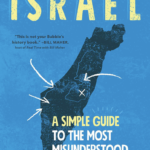
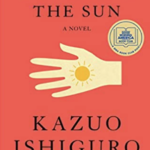
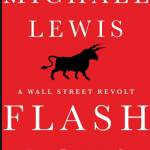
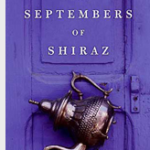
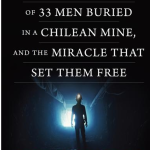






 The Guns At Last Light – The War In Western Europe by Rick Atkinson – This is the final book of a trilogy about the war in Western Europe. It begins with the plans for the Normandy invasion and concludes with the German surrender and the death of Hitler. For those of us who grew up in the post WWII years and have a certain attraction to the many great books that have detailed this war, this series stands to be the most comprehensive, complete and I would imagine the most accurate of the great books written on this subject .While I have not read the first two of this series, I base my opinion on the fact that Atkinson draws upon all the previous works as well as extensive quotes from the diaries and writings of the participants from Churchill, Eisenhower, Montgomery, De Gaulle etc., their aides, their wives, their letters as well as the reporters of the times such Severid, Murrow, Hemmingway, Pyle etc. He also includes the writings from the diaries and letters of the GIs who fought the war including many heart wrenching letters from soldiers who were subsequently killed in action. Needless to say he draws insights from both sides of the conflict. The book covers the big picture as well as the human view from the foxhole. You could easily say that the book was over detailed but on the other hand it didn’t seem to miss anything. Each chapter has a small map of where things stood at a particular time but it was really difficult to read and appreciate. On the other hand being able to follow the narrative clearly would require a large wall map in color on your wall that would change with every few pages. (In the future electronic books, i pads and computer readers should have a tab which one could go back and forth and see a full screen map with flashing or moving graphics.) The book captures the drama and the tension of planning and executing the crossing of the British Channel. Although we may have previously read about it or seen films about this subject, it is still almost impossible to fully appreciate the logistical miracle of carrying it out as well as the terrible loss of life, injury and emotional trauma that these hundreds of thousands of soldiers experienced. It is equally difficult to realize that the survivors and hundreds of thousands of new soldiers were to go through the horrific experience of the Battle of the Bulge and the painful march through Germany, crossing the Rhine and ultimate destruction of the German military. Imagine landing crafts filled with soldiers being destroyed before they reached the shore, gliders laden with troops being shot out of the sky or crashing into the ground. There are all sorts of horrendous descriptions of Sherman Tanks or German Panzer Tanks either bringing about tremendous destruction or being blown up themselves with their occupants going up in flames. The narrative while seemingly tracing every painful kilometer across France and Germany switches back and forth from the battle line to various command centers behind the lines where Eisenhower, Montgomery, Patten and lesser but well known names are interacting in person or through messages sent back and forth. We get insight into the personalities, of our leaders as well as conflicts with each other. We can appreciate their brilliance as well as their mistakes. Every decision that they would make, when to advance, when to pull back, which side to move, who would cover which flank, when to bomb etc. would invariably cost hundreds if not thousands of casualties or fatalities of their troops. Sometimes there would be “fratricide” where errors were made of bombarding our own troops. There is even material showing what was going on in the German headquarters with some insight into their personalities. Although no new ground was broken in understanding the mindset that brought about the concentration camps, the discovery of them, the horror that was seen and the allied reaction to it is all there. The epilogue which sums up the massive cost of this war in a wide range of parameters from the 56 million hand grenades used, to battlefield causalities of the Americans since D-Day which exceeded ¾ million of whom at least 165,000 were dead, plus 62,000 air casualties – half of them dead. British, Canadian, Polish and ancillary forces tallied combat losses of 194,000 including 42,000 killed. Of all German boys born between 1915 and 1924 1/3 were dead or missing. Some 14 percent of the Soviet population of 190 million perished during the war. After the war, the digging up of American bodies from German soil so no soldier was left behind is another story which is briefly chronicled and will pull on the emotions of the reader along with so many other episodes in this piece of world history. Throughout the 878 pages (one quarter of which is notes and references) I would periodically ask myself why I was so drawn to still another account of this Great War, however well written and complete it might be? For some it might be to fully appreciate the war of their fathers, grandparents or great grandparents, which is certainly part of the reason for me (although only my uncles were in this great war). However, I have come to understand for me and perhaps for others young and old, this book allows me to identify with these brave people as I try to answer the an unanswerable question. How would I have dealt with being a soldier and participating in the “Guns of Last Light?”
The Guns At Last Light – The War In Western Europe by Rick Atkinson – This is the final book of a trilogy about the war in Western Europe. It begins with the plans for the Normandy invasion and concludes with the German surrender and the death of Hitler. For those of us who grew up in the post WWII years and have a certain attraction to the many great books that have detailed this war, this series stands to be the most comprehensive, complete and I would imagine the most accurate of the great books written on this subject .While I have not read the first two of this series, I base my opinion on the fact that Atkinson draws upon all the previous works as well as extensive quotes from the diaries and writings of the participants from Churchill, Eisenhower, Montgomery, De Gaulle etc., their aides, their wives, their letters as well as the reporters of the times such Severid, Murrow, Hemmingway, Pyle etc. He also includes the writings from the diaries and letters of the GIs who fought the war including many heart wrenching letters from soldiers who were subsequently killed in action. Needless to say he draws insights from both sides of the conflict. The book covers the big picture as well as the human view from the foxhole. You could easily say that the book was over detailed but on the other hand it didn’t seem to miss anything. Each chapter has a small map of where things stood at a particular time but it was really difficult to read and appreciate. On the other hand being able to follow the narrative clearly would require a large wall map in color on your wall that would change with every few pages. (In the future electronic books, i pads and computer readers should have a tab which one could go back and forth and see a full screen map with flashing or moving graphics.) The book captures the drama and the tension of planning and executing the crossing of the British Channel. Although we may have previously read about it or seen films about this subject, it is still almost impossible to fully appreciate the logistical miracle of carrying it out as well as the terrible loss of life, injury and emotional trauma that these hundreds of thousands of soldiers experienced. It is equally difficult to realize that the survivors and hundreds of thousands of new soldiers were to go through the horrific experience of the Battle of the Bulge and the painful march through Germany, crossing the Rhine and ultimate destruction of the German military. Imagine landing crafts filled with soldiers being destroyed before they reached the shore, gliders laden with troops being shot out of the sky or crashing into the ground. There are all sorts of horrendous descriptions of Sherman Tanks or German Panzer Tanks either bringing about tremendous destruction or being blown up themselves with their occupants going up in flames. The narrative while seemingly tracing every painful kilometer across France and Germany switches back and forth from the battle line to various command centers behind the lines where Eisenhower, Montgomery, Patten and lesser but well known names are interacting in person or through messages sent back and forth. We get insight into the personalities, of our leaders as well as conflicts with each other. We can appreciate their brilliance as well as their mistakes. Every decision that they would make, when to advance, when to pull back, which side to move, who would cover which flank, when to bomb etc. would invariably cost hundreds if not thousands of casualties or fatalities of their troops. Sometimes there would be “fratricide” where errors were made of bombarding our own troops. There is even material showing what was going on in the German headquarters with some insight into their personalities. Although no new ground was broken in understanding the mindset that brought about the concentration camps, the discovery of them, the horror that was seen and the allied reaction to it is all there. The epilogue which sums up the massive cost of this war in a wide range of parameters from the 56 million hand grenades used, to battlefield causalities of the Americans since D-Day which exceeded ¾ million of whom at least 165,000 were dead, plus 62,000 air casualties – half of them dead. British, Canadian, Polish and ancillary forces tallied combat losses of 194,000 including 42,000 killed. Of all German boys born between 1915 and 1924 1/3 were dead or missing. Some 14 percent of the Soviet population of 190 million perished during the war. After the war, the digging up of American bodies from German soil so no soldier was left behind is another story which is briefly chronicled and will pull on the emotions of the reader along with so many other episodes in this piece of world history. Throughout the 878 pages (one quarter of which is notes and references) I would periodically ask myself why I was so drawn to still another account of this Great War, however well written and complete it might be? For some it might be to fully appreciate the war of their fathers, grandparents or great grandparents, which is certainly part of the reason for me (although only my uncles were in this great war). However, I have come to understand for me and perhaps for others young and old, this book allows me to identify with these brave people as I try to answer the an unanswerable question. How would I have dealt with being a soldier and participating in the “Guns of Last Light?”